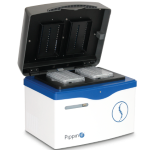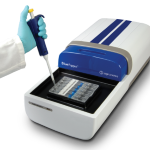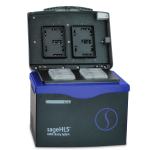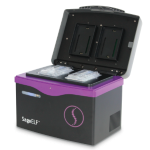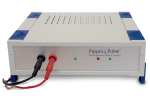We released our SageELF instrument two years ago, and seeing how scientists have adopted it for various NGS pipelines has been a wonderful journey. If you haven’t noticed these great uses, we’ll get you up to speed with this quick recap.
SageELF is a unique size-selection platform for scientists who need something more sophisticated than the traditional options. It takes a DNA sample and separates it by size into 12 contiguous fractions; the high yield makes the instrument an especially nice fit for precious samples. Users can then advance the optimally sized fraction for analysis, or pool multiple fractions for a more customized approach. SageELF can also resolve large DNA thanks to its built-in pulsed-field electrophoresis technology.
One of the first applications we saw was in mate-pair sequencing, driven by experts like Darren Heavens at The Genome Analysis Centre. He led a team that developed a new protocol for generating long mate-pair (LMP) libraries using the SageELF (check it out in Biotechniques or read our blog post). The method saves time and money and decreases the amount of input DNA needed.
“Using the SageELF streamlines the library construction process, allowing LMP libraries >10 kb to be constructed in under 2 days with <10 µg input material,” the TGAC scientists reported. “For many genome projects, multiple insert size LMP libraries are required, and the ability to construct up to 12 discretely sized libraries for a combined reagent cost of $1270 compared with the reagent cost of $715 for a single insert size LMP library highlights the potential cost savings.”
Heavens also came up with a method to analyze copy number variation more reliably with SageELF. His team separates PCR products with the instrument, and then sequences the largest fraction to determine the highest copy numbers present in the sample. “That gives us the true copy number,” he says. “The duplicated genes themselves are so similar that if you don’t have the full-length fragment, they just collapse down in the assembly.”
More recently, we’ve seen adoption of the SageELF among PacBio users working with the Iso-Seq method. The contiguous fractions allow for pooling of samples prior to sequencing, which helps scientists build the ideal library for their full-length isoform studies.
Other labs are just getting started with their SageELF instruments, and we can’t wait to see the creative uses they discover for it!
